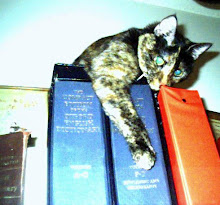 (Atlatl petroglyphs at Little Lake, California)
(Atlatl petroglyphs at Little Lake, California)
True story: When I switched my major in college from Journalism to Anthropology, it was mostly to take the courses that would now be called Women's Studies. However, to have the major I was required to take a lot of basics in field archeology which wound up catching my interest. I had one professor, Dr. McCormick, whose hair and beard were troll-esque and whose sense of adventure was unparalleled.
He was a big believer in hands-on learning. Thus, we were regularly taken to outdoor sites where we learned how to flintknap, to dig clay and make pottery, to weave baskets -- even, one memorable day, to mix pigments and blow them through a straw onto a limestone wall, outlining our hands like our early hominid ancestors had. We weren't any good at these endeavors, but it taught me worlds about, well, our world.
Dr. McCormick, however, was fairly accomplished at ancient crafts. His bows and arrows shot true and his hand axes of obsidian were first-class. One semester he got caught up in the physics of atlatls. An atlatl is a throwing stick that extends the length of a human arm and, through leverage, transfers energy from muscle to greatly extend the range of whatever is thrown in its cup. He believed the Aztecs had produced atlatls which were traded up into Texas, because the Spaniards were terrified of them. He began tinkering around with making them in different forms, and modifying the 6' long slender spears they hurled.
(To hear the pronunciation of atlatl, a Nahuatl word which means water thrower, go here and click on the wav file.)
Dr. McCormick told us that during the age of sword warfare in Europe, some swords were so massive that only a very strong man could lift and swing them. This left no room for finesse, but if you were struck by such a sword, you went down and that was the point. Eventually a clever smith invented broadswords with what were called "apples": The heavy sword had a track running the length of one side, with a stop at the tip end. Into this track was fitted a dense "apple" of metal which ran up and down the groove but never detached from the blade. As you slowly swung, the stored work (due to the mass) of the apple slid down the blade until, if you were skilled, the sword made contact with its intended target just as the apple reached the end of its track, multiplying the force of the swing to such an extent that it could penetrate any armor and cut a man in half.
There was some evidence that atlatls in the New World had been modified by stones for perhaps a similar effect, enhancing the power of a throw. He spent much of the fall semester trying to come up with an atlatl which satisfied his theory. Not long before the Christmas break, on a Sunday morning, he took his beta atlatl and best spear to a large public park in Dallas, where he lived. He went to the far end of a soccer field which was deserted and faced the opposite end. Beyond the goal in the distance was a patch of woods, and beyond that was the street with a bus stop. To be safe, he reined in his throw, using the stone weight but not all the force in his muscular arm. (Girl using an atlatl to throw a stick)
(Girl using an atlatl to throw a stick)
The spear sailed into the air with an elegant but alarming arc. Within seconds, he said, he knew it was going to land somewhere beyond the 100 yards of the soccer field. He began running as fast as he could toward the patch of woods, praying fervently no one was in them.
He searched frantically through the woods for his spear. Slowly he became aware of screams ahead of him, and followed the sound. He emerged from the thicket to see the bus stop next to the street. An elderly woman was standing on the sidewalk, screaming one scream after another and pointing to the slatted bench at the bus stop. Still minutely quivering, its shaft neatly between two of the slots and right next to the woman's purse, the head of his spear was embedded several inches in the earth beneath the bench.
A crowd was beginning to form. Dr. McCormick shoved his atlatl into his coat and reminded himself his fingerprints were not on record anywhere. He walked slowly in the opposite direction, abandoning his favorite spear. The incident made all the local papers, with wild theories about the origin of the weapon. He only told a couple of us, and I kept his secret. Until now.
Sunday, August 10, 2008
ATLATL
Posted by
Maggie Jochild
at
9:47 AM
![]()
Labels: atlatl, memoir, Paleolithic crafts
Subscribe to:
Post Comments (Atom)





3 comments:
O. M. G.
I have been making an atlatl and spear in "rocks & sticks" class for archaeology. I knew it was going to be good, but...woah.
Hey Maggie,
Here's a link to my friend Stacie in Whitehorse, Yukon showing two band members from The White Stripes how to throw a spear with an atlatl.
Cheers, Jen
oops, HERE's the link:
http://keeponsledding.blogspot.com/2007/06/listen-to-cbc-this-thursday-at-1030.html
Post a Comment